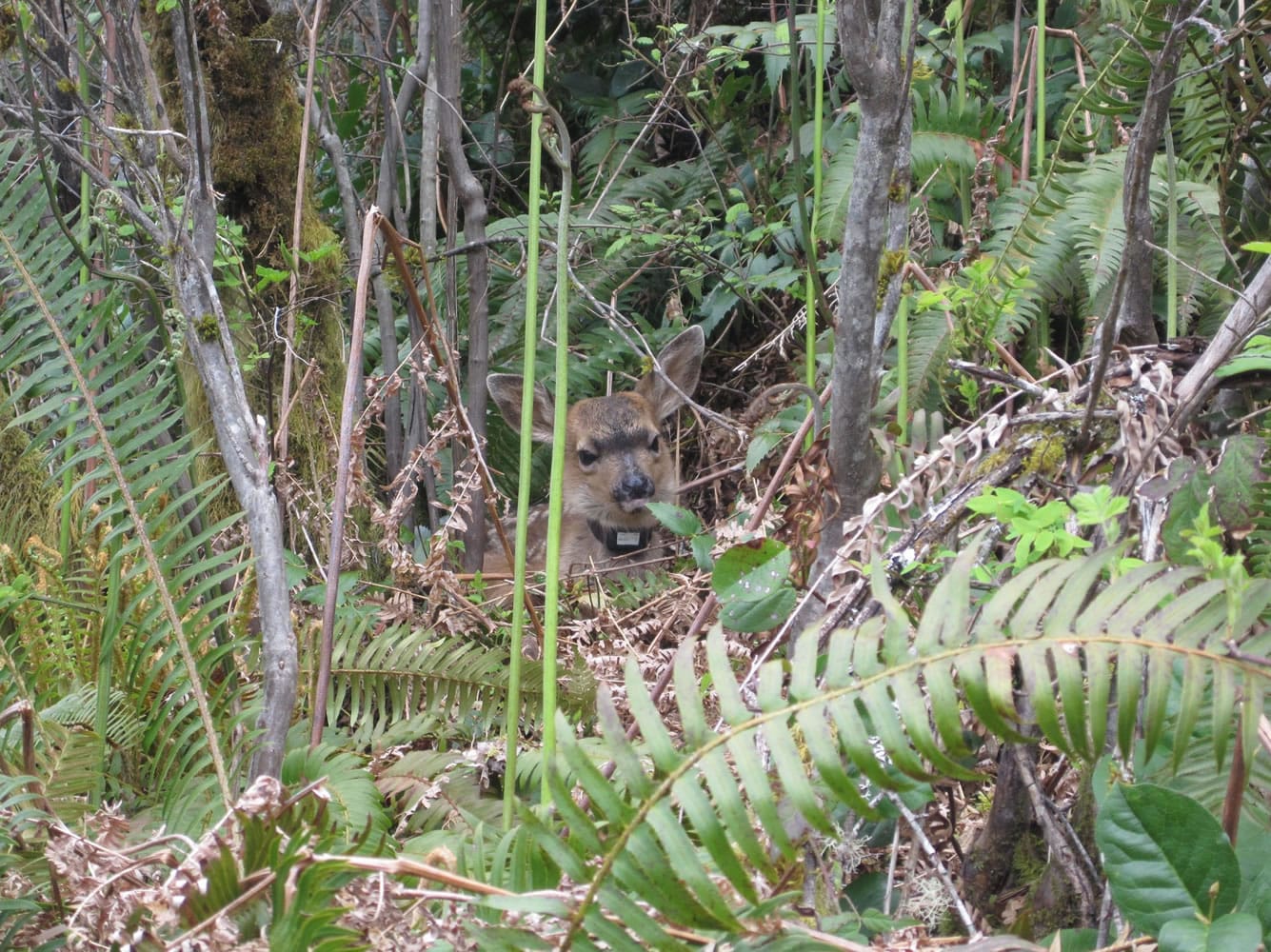Wildlife biologists hope to capture eight blacktail does in the Washougal unit and eight more in the Coweeman unit next spring as part of a multi-year research project to learn more about deer on the west side of Washington.
Four does were captured in the spring of 2010 on state land in the Washougal unit in eastern Clark County and fitted with satellite-signaling neck collars.
The research also included deer in Mason, Clallam and Thurston counties.
The does got a neck collar that sends satellite and VHF signals, plus a transmitter implant which exits the body when the animals give birth.
A satellite monitors the location of the does every four hours, information viewable from a computer screen.
Biologist Eric Holman of the Washington Department of Fish and Wildlife said the implant signal is distinct and he was able to catch six fawns from the four does in the first summer.
The satellite collars are too large to put on a newborn, so the young animals got VHF collars designed to stretch as the deer grows and rot off in about a year.
All four does from 2010 were alive as of late September. Their collars have electronic gadgetry that allows a signal to be sent to break them loose. The collars are retrieved and the does drop out of the study.
The study is to try to develop a good method for estimating blacktail deer numbers.
“People have been trying for a long time,” Holman said, “Oregon has tried. California has tried. Alaska has tried. But they live in these thick, thick woods. You can’t see the darn things and so how do you count them? It’s a challenge.”
Even when the vaginal implant transmitter signals a birth has occurred, catching the fawns is not easy, Holman said.
“It’s enjoyable, but pretty challenging. You’re looking for a camouflaged deer that may or may not exist in a giant landscape.”
The satellite data showed that for the most part the does were homebodies.
“They generally have a very small home range,” he said. “One of them basically never went anywhere.”
One of the does would drop about 1,500 feet in elevation when it snowed.
“Pretty quickly though, she goes back to her normal place,” Holman said. “The weather moderates and she goes back.”
One doe made summer sojourns of a couple of miles in the Silver Star Mountain complex, not traveling a long distance but gaining quite a bit of elevation.
“We are able to demonstrate some of that seasonality and migratory-type behavior in these westside blacktails,” he said. “Oregon has found that too. Most of them though, especially when you get west of I-5, where the climate is more mild, hardly go any place.”
Does move less than male deer, he said.
“Bucks in the rut probably would do something pretty different,” Holman added.
One of the does clearly likes a clump of deciduous trees. Another demonstrated the importance of edge — popping out the trees to eat then returning to the forest, he said.
Holman learned how elusive blacktail deer can be.
“They are very, very hard to get close to, even with equipment,” he said. “They typically sneak away. They don’t bolt or blast out across the clearcut or go crashing away. You can tell with the equipment they are detecting you, sneaking around behind you or staying hidden. They do subtle things to avoid you but not expose themselves. They are very good at it.”




